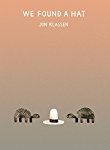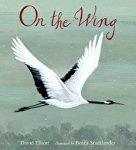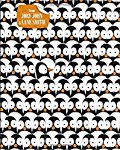Children often feel very overwhelmed when they see all the problems in their world. Stories about wars, environmental disasters, famines, political conflicts, and social upheavals fill newspapers, news broadcasts, and social media. There is so much wrong out there that they often think that there is nothing that they can do that will have an impact on so much chaos. The truth of the matter is that every little effort that makes the world safer, kinder, and cleaner is a step in the right direction.
Today's picture book shows how some children bring about change for the better in their own little world, and that change, though its impact is not global, is still vital and precious.
 Pond
Pond
Today's picture book shows how some children bring about change for the better in their own little world, and that change, though its impact is not global, is still vital and precious.
 Pond
Pond
Jim La Marche
Picture Book
For ages 5 to 7
Simon and Schuster, 2016, 978-1-4814-4735-5
One cold winter day Matt is out walking when he comes to
a place that he and his friends call “the Pit.” It is usually just an open
space in the woods that is full of trash, but on this day he sees that a stream
of water is bubbling its way out of the ground. Matt looks around and realizes
that this neglected place was once a pond and he makes a decision. He is going
to bring the pond back.
Matt tells his
sister Katie and his best friend Pablo about his discovery, and asks them if
they are willing to help him clean the place up. Both agree and the very next
weekend the three young people get to work. They pick up all the junk and trash
and, with Pablo’s father’s help, take it all to the dump. Then they move rocks
to create a dam.
As the days go
by and winter softens into spring, the pond starts to fill up. In the summer
the children spend time by the water until they are driven off my biting
insects and summer storms. Then Matt’s dad decides to help the children work on
an old row boat so that it is seaworthy once again. Together they work at
patching holes, sanding rough wood, and nailing down boards. The boat is named
Dragonfly, and when the children take it out on the water it floats.
As the months go
by the pond offers Matt and his friends and family members all kinds of
seasonal joys, and it also gives animals a place to call home.
This wonderful
book takes us through the seasons with a boy who, thanks to his imagination and
hard work, is able to bring back a gift of nature that was lost. A neighborhood
pond might seem like a small thing, but the special moments it gives Matt and
his friends are precious. As they watch the pond grow and flourish, the
children in the story grow to appreciate that sometimes the little things can
become big things.
Children who
think that they are too small or too young to make a difference in the world will
surely be empowered by this tale. They will see that they, like Matt, can bring
about change for the better if they really want to.





